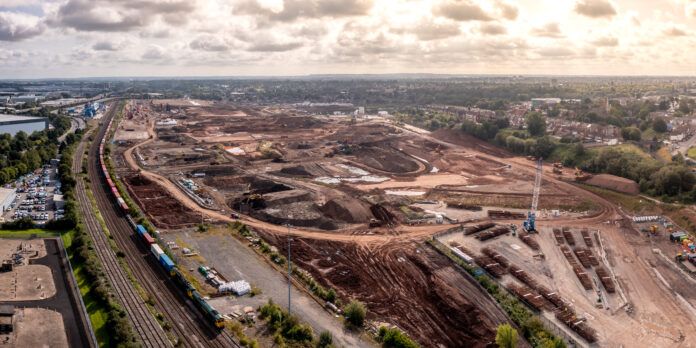A construction and engineering recruiter has warned that the UK’s construction industry is facing a skills shortage that will “make 2007’s War for Talent look like a water fight.”
Simon Harris, managing director of construction, property and engineering recruitment at Randstad UK, said a combination of mega construction projects already underway in the UK and projects that are yet to begin — such as water infrastructure developments, the construction of the Lower Thames Crossing, the expansion of the National Grid, and the Stonehenge Tunnel — as well as the imminent resurgence of the housing building market, is set to intensify the current talent shortage and lead to a “brutal labour shortage.”
The construction labour force was approximately 2,600,000 strong in 2008, whereas at the end of 2023, the sector was 465,000 workers smaller, employing 2,100,000 people.
Simon says existing projects — which include HS2, the Thames Tideway, and Hinkley Point — are already stretching the workforce.
HS2 employs 30,000 people now and HS2 and its contractors are still actively recruiting hundreds of new roles.
Construction of the Thames Tideway Tunnel is ongoing and won’t be complete until 2025.
EDF has confirmed the new nuclear power station at Hinkley Point won’t be finished any time this decade. And Sizewell C, which is only at the enabling works stage, is already creating hundreds of job vacancies. The construction of Sizewell C is expected to commence in this year, with construction taking between nine and 12 years; the project is set to create thousands of jobs.
Furthermore, house building is set to make a resurgence with analysts reporting that interest rates have peaked and will soon start to fall. The Bank of England will lower the base interest rate to 3% by the end of 2025, according to analysis by research firm Capital Economics — forecasting the first rate cut for June 2024.
Simon said: “HS2 alone employs a couple of percent of the UK’s entire construction workforce. Sizewell C is already hoovering up talent. Hinkley Point isn’t finished, and neither is the Thames Tideway Tunnel. The construction industry is already stretched thin. We have lost a lot of people from the house building side of the industry, in particular: the workforce has lost close to half a million people since 2008. There’s very little slack in the system.
“At the moment, it’s hard, but not impossible, to recruit. But the combination of mega construction projects already underway and projects that are yet to begin will intensify the current talent shortage and lead to a brutal labour shortage. Soon interest rates will dip and housebuilders will put their foot on the gas. The perfect storm will hit in 2026, when the Lower Thames Crossing finally kicks off. Construction employers without a bullet-proof long-term workforce plan will find the going very hard indeed. It will make the 2007 War for Talent look like a water fight. And who knows what the sector does when we break ground on the 1¼ mile Stonehenge tunnel and start overhauling eight miles of the A303.
“If construction employers are to meet the challenge, they are going to have to hire approximately half a million people. Employers who want to navigate the next few years effectively are going to have to look at hiring people from different backgrounds and fishing in more diverse talent pools; pay more for skills; and grow more of their own talent. They need to focus on apprenticeships and training new hires as well as upskilling existing employees. They’re going to have to move to skills first recruitment, rather than looking for ‘experience’ above all else. Let’s not forget that experience doesn’t exist for some new roles like green skills or AI-based tech. Employers are also going to have to start moving faster to secure the best talent — protracted recruitment processes will prove utterly counter-productive.”




